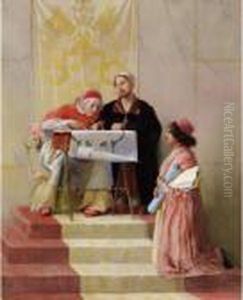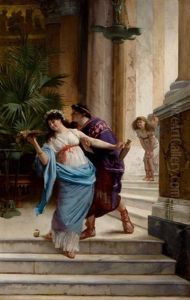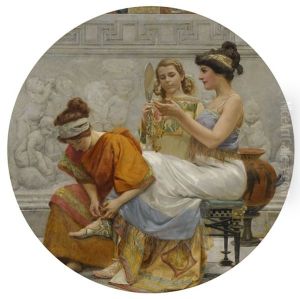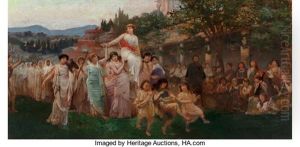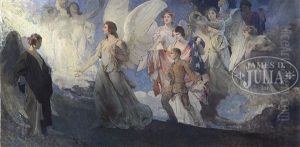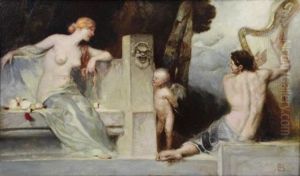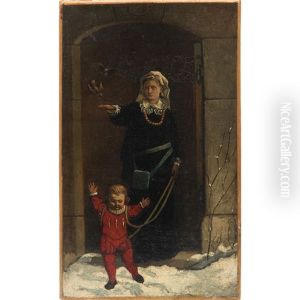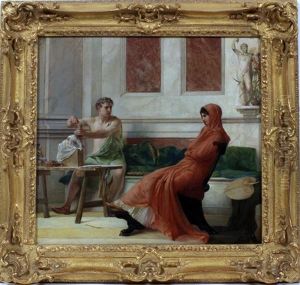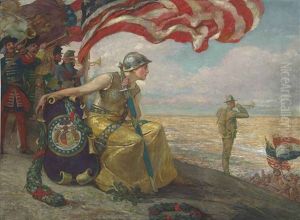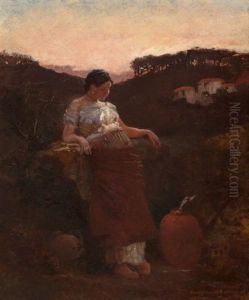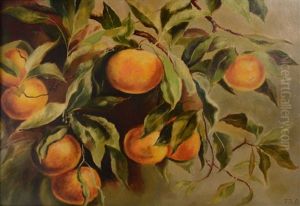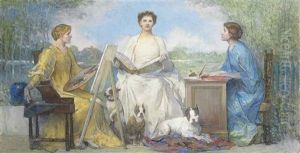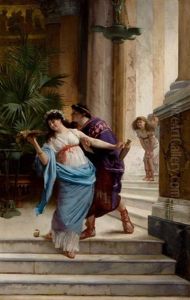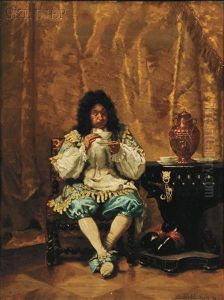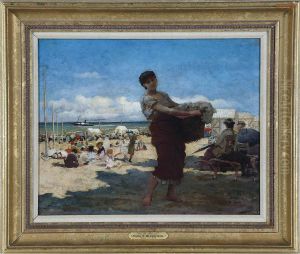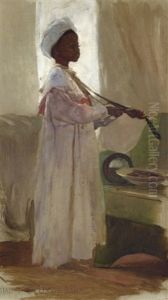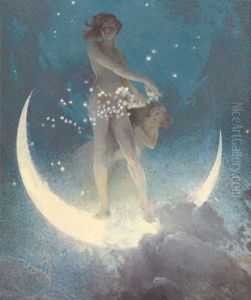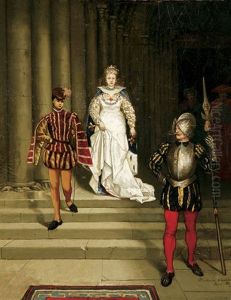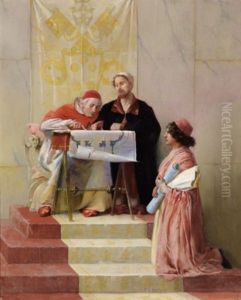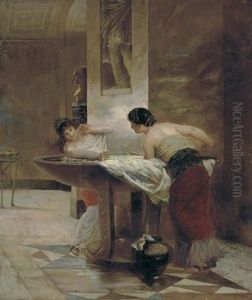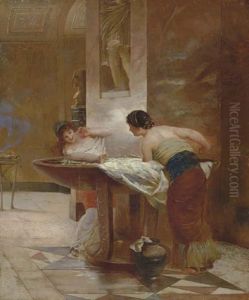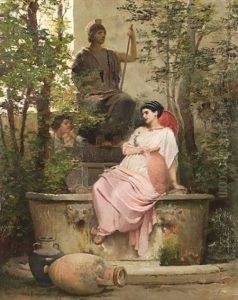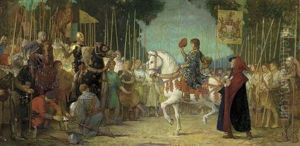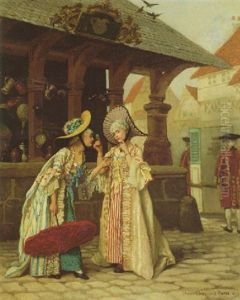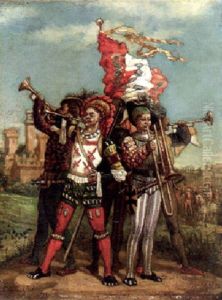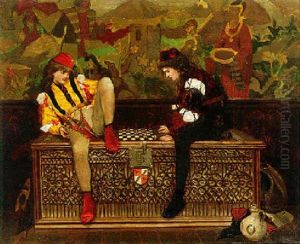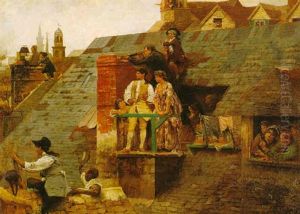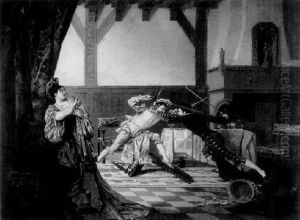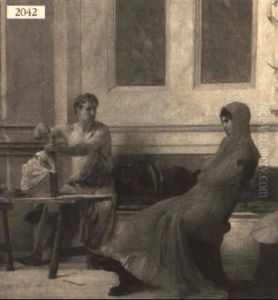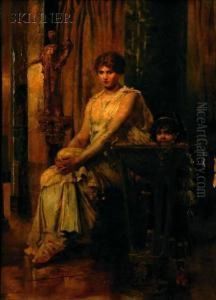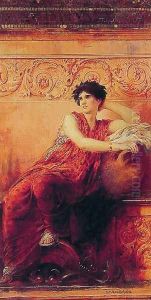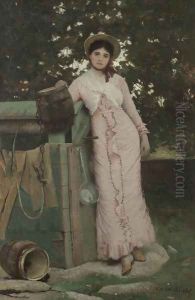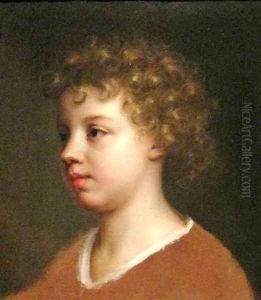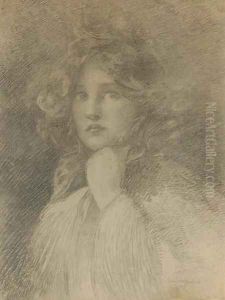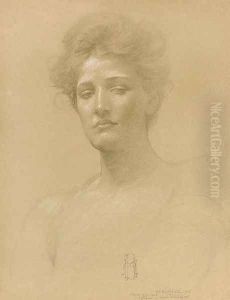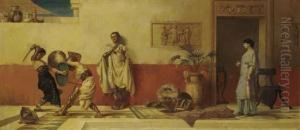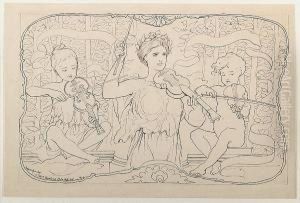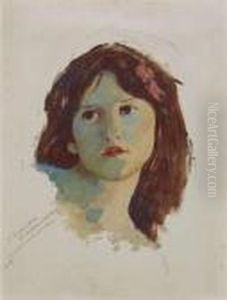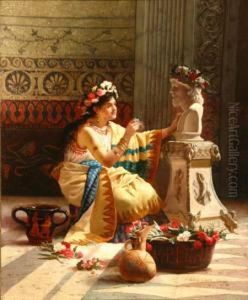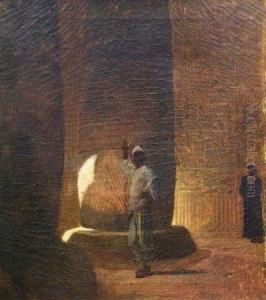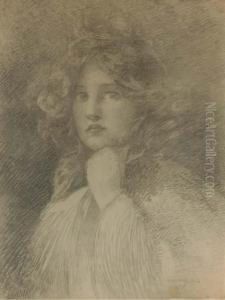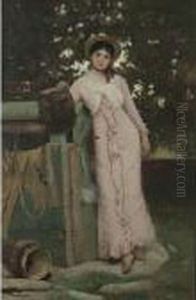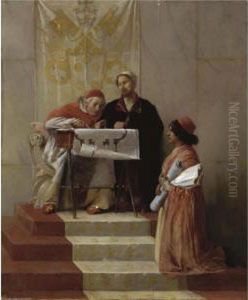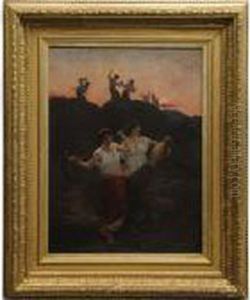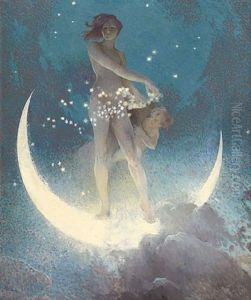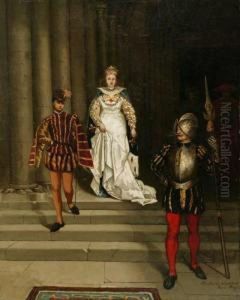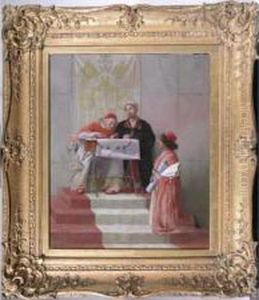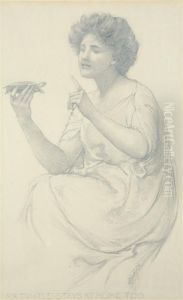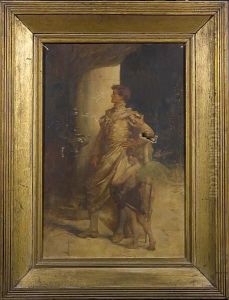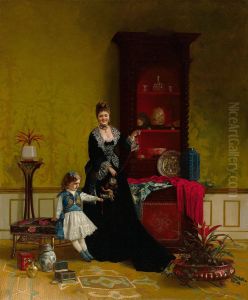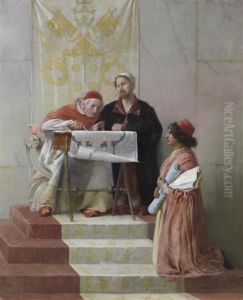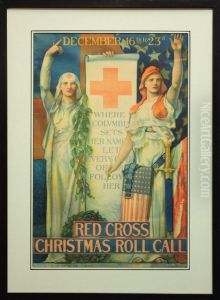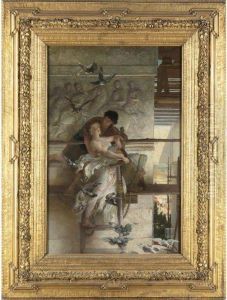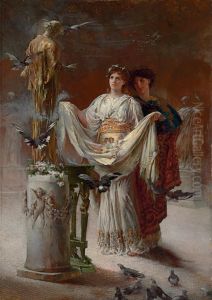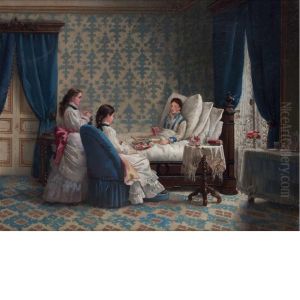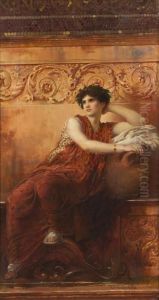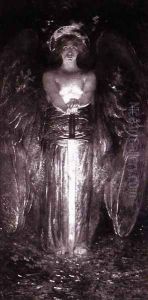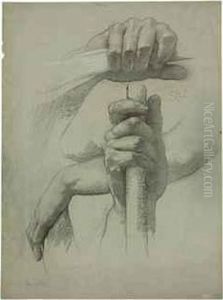Edwin Howland Blashfield Paintings
Edwin Howland Blashfield was an American artist, muralist, and writer, known for his large wall paintings which adorned some of the most notable buildings in the United States. Born on December 5, 1848, in New York City, Blashfield grew up in a time when the United States was undergoing significant cultural and architectural transformations, which influenced his future work.
Blashfield studied art at the Pennsylvania Academy of the Fine Arts in Philadelphia and later in Paris at the École des Beaux-Arts and under the tutelage of Léon Bonnat, a prominent French painter. This classical training provided him with a foundation in the techniques and styles of European art, which he would later adapt to an American context.
After his studies in Europe, Blashfield returned to the United States where he began his career as a painter of portraits and classical subjects. However, it was his murals that earned him the most acclaim. Blashfield's murals are characterized by their grand scale, classical themes, and incorporation of allegorical figures. He was heavily influenced by the Italian Renaissance, and his work reflects a mastery of composition, color, and the human form.
One of Blashfield's most famous works is the mural 'The Evolution of Civilization,' which can be found in the dome of the Library of Congress's Jefferson Building in Washington, D.C. This mural, completed in 1896, features a procession of figures representing the various ages of civilization, from the Egyptians to the Greeks and Romans.
Throughout his career, Blashfield was a member of several art societies and served as President of the National Academy of Design. He was also a respected writer on art topics, contributing to various periodicals and publishing a book on mural painting.
Edwin Howland Blashfield's contributions to American art were significant, and his murals continue to be admired for their beauty and complexity. He passed away on October 12, 1936, leaving behind a legacy of artistic achievements that have been preserved in some of the nation's most important historical buildings.
